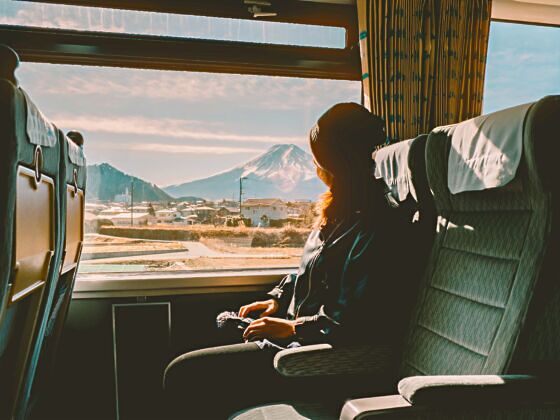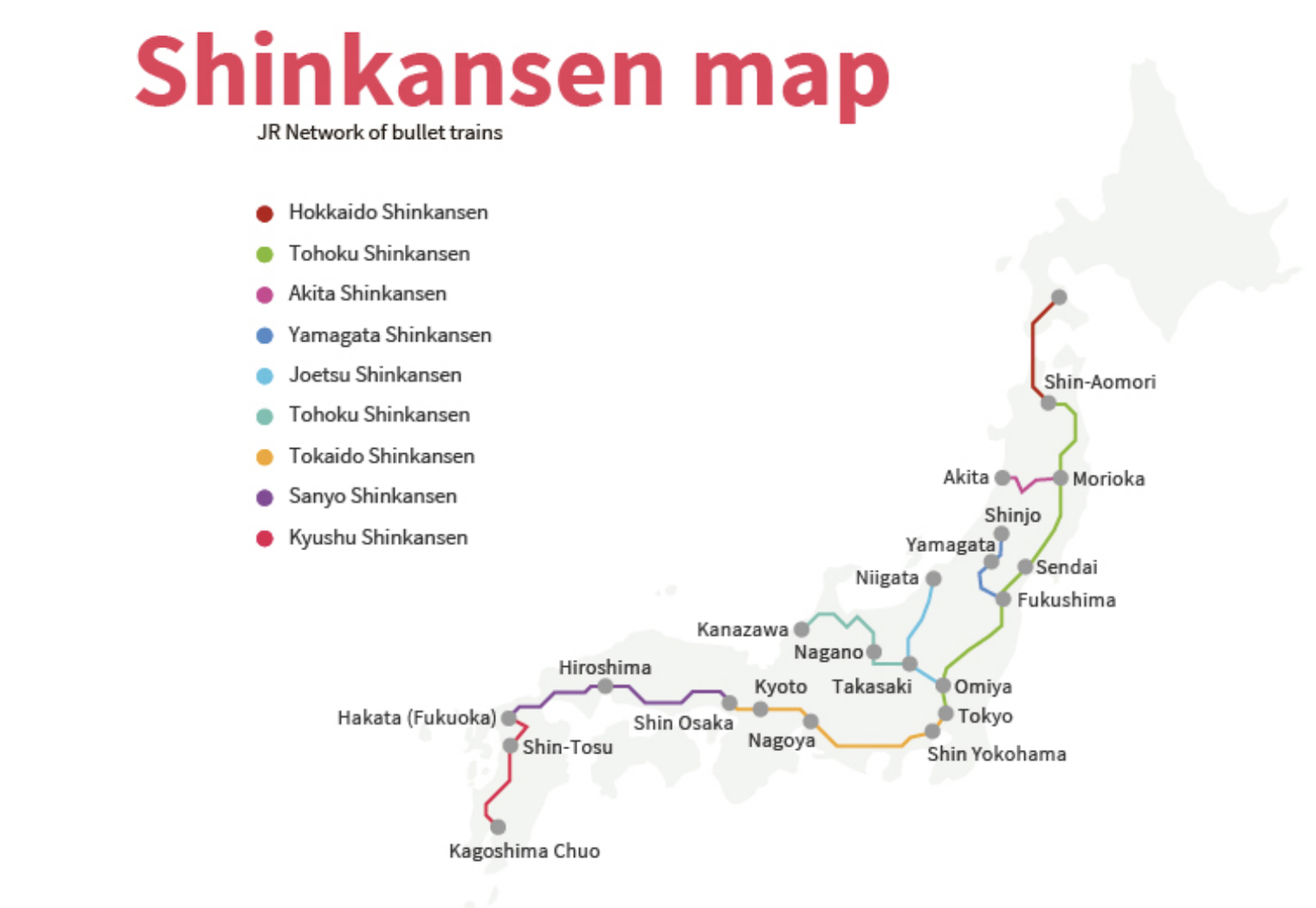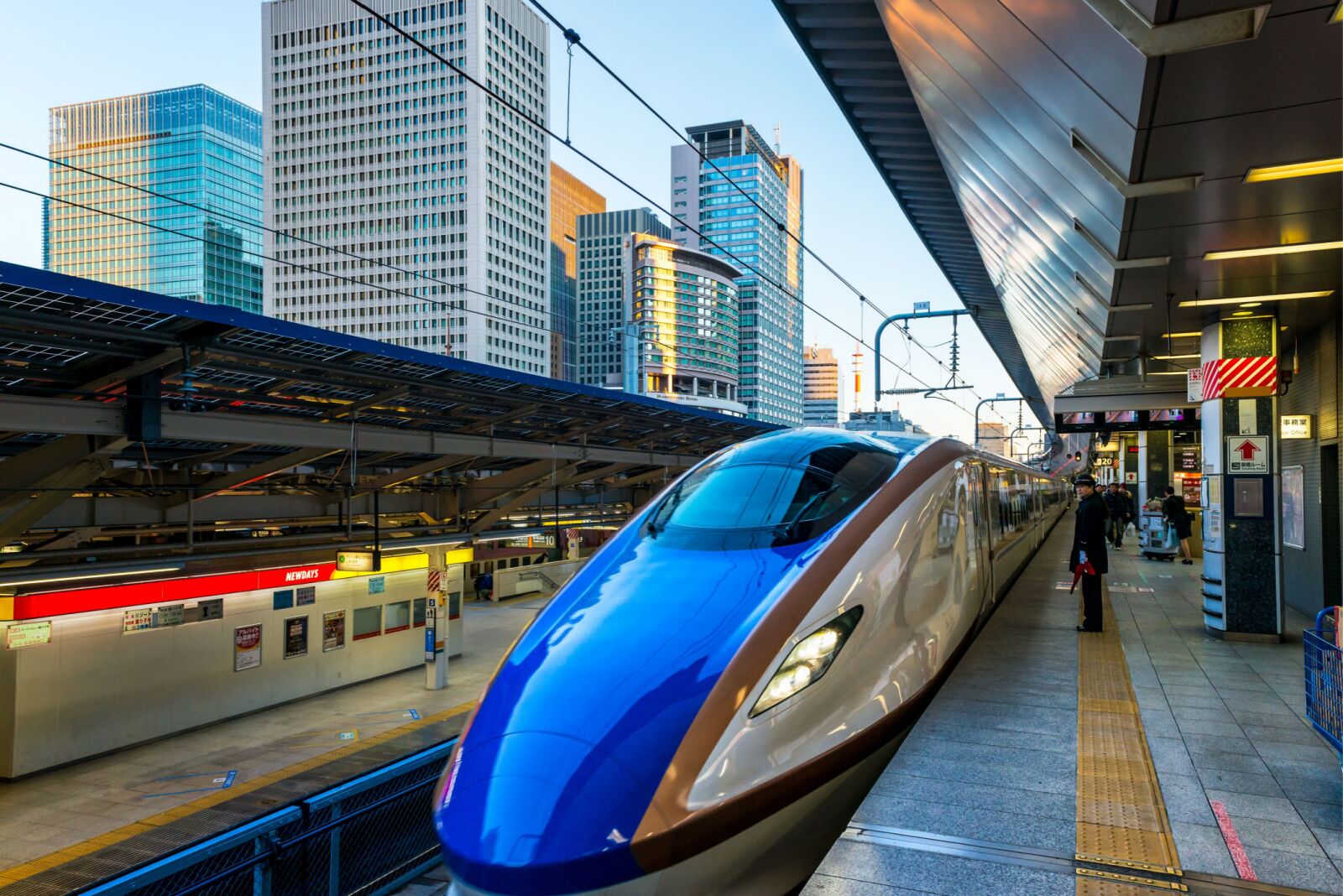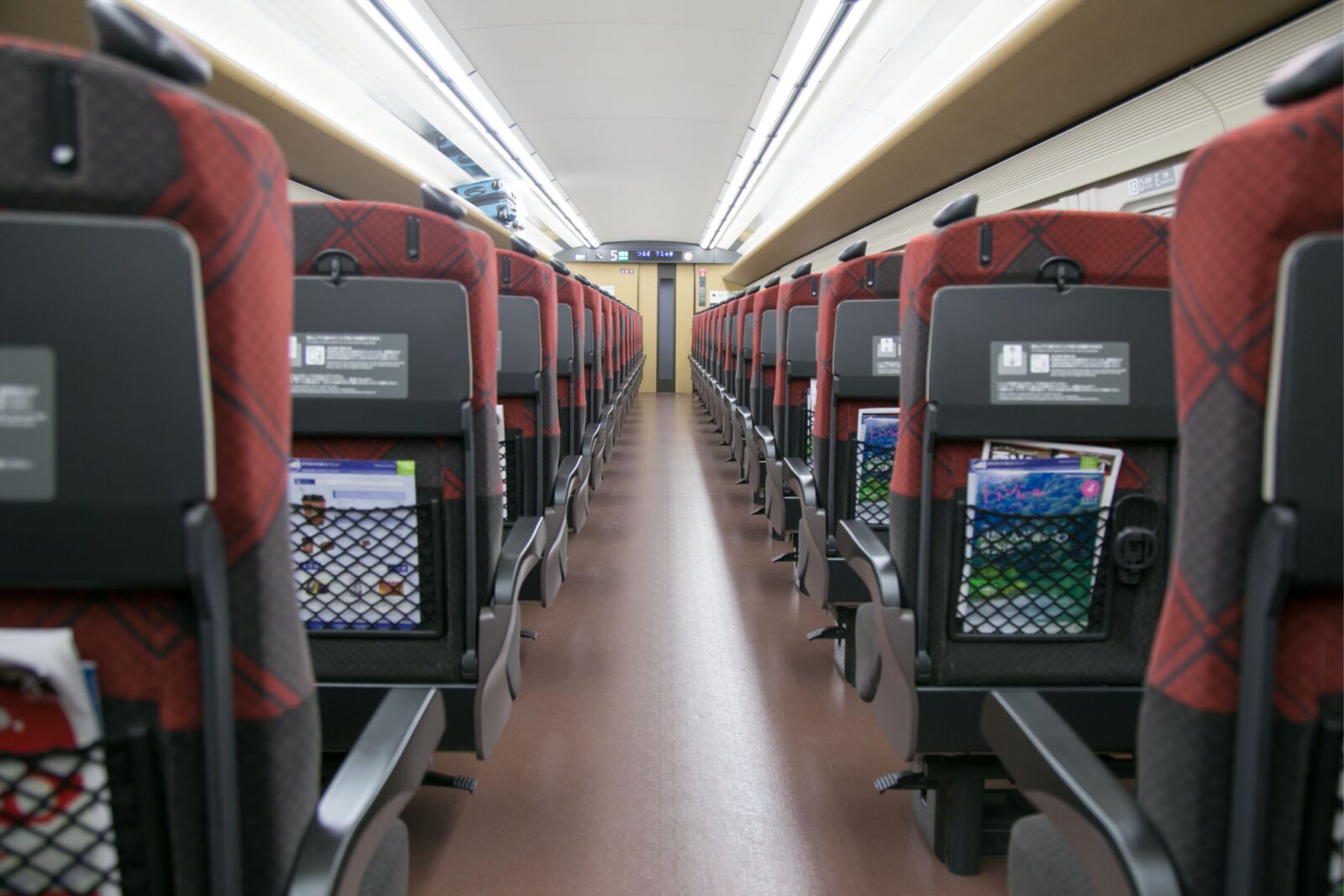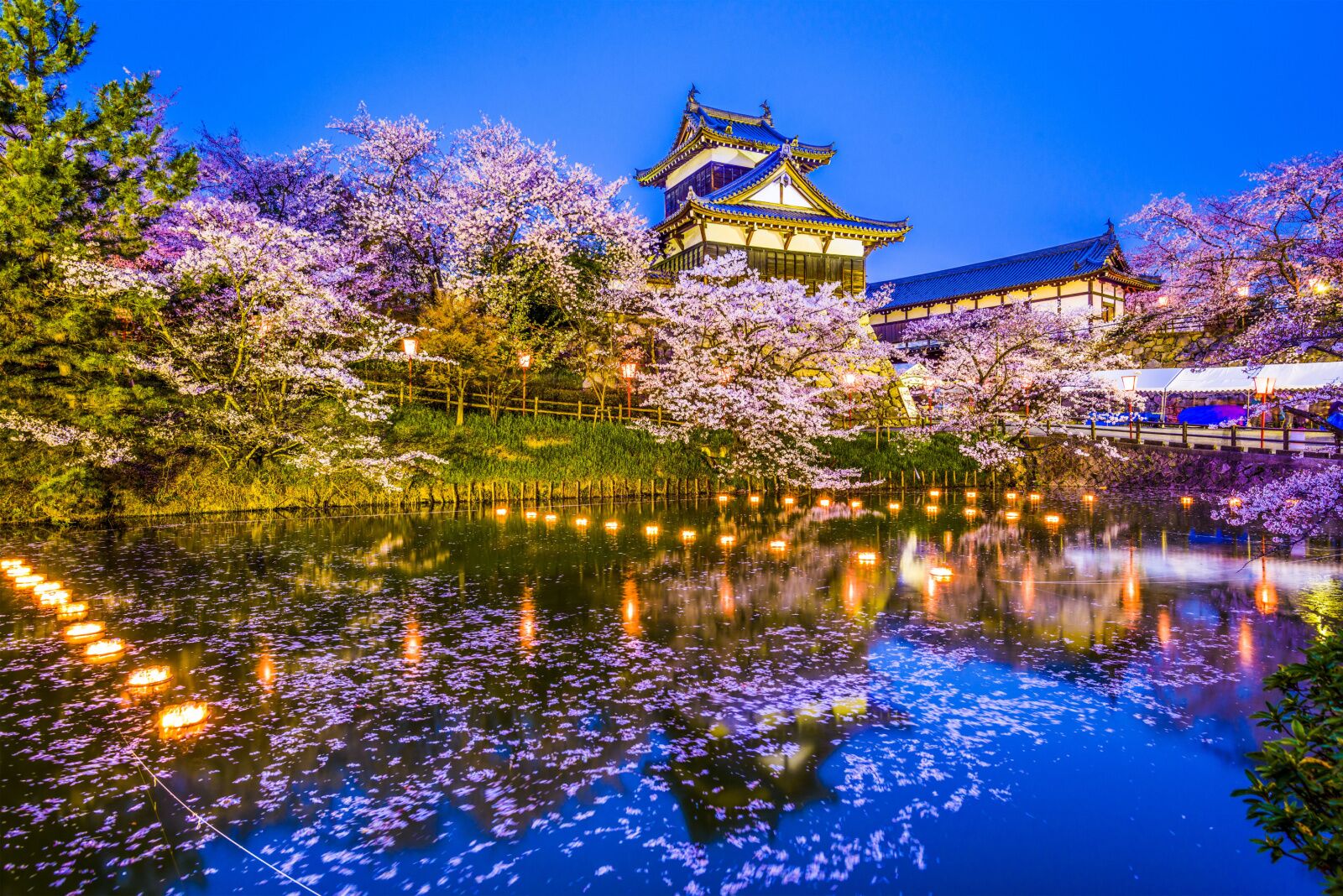Japan is a paradise for train lovers. Roughly 18,600 miles of rail lines stretch across the island nation, carrying billions of passengers every year. And at the heart of the vast train system is the Shinkansen, Japan’s high-speed rail line, which lets travelers and locals alike travel throughout the country in record time.
Cruising on the Shinkansen at nearly 200 miles per hour will not only get you to your destination quickly, but also provide an intimate view of Japan. You’ll be able to relax and look out the window while sipping a cold Sapporo as you zoom by centuries-old temples, towering volcanoes, and natural landscapes that look straight out of a painting.
